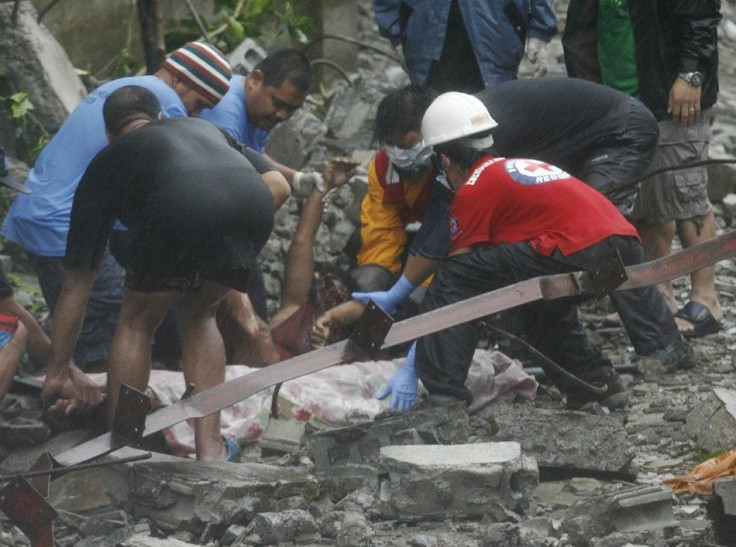Typhoon Nesat Heads to Sea, But Philippines Still in Danger

Typhoon Nesat's path drove it off of the Philippines and into the South China Sea on Wednesday, but many parts of the country are still unsafe.
The Department of Health warned Filipinos against trekking through floodwaters, which can breed harmful bacteria such as leptospirosis. Also known as Weil's disease and Rat Catcher's Yellows, leptospirosis is a rare bacterial infection that causes severe fever and shaking chills, and can lead to bone and lung problems and sometimes death.
The disease is spread through water contaminated with animal urine. The health agency advised that if wading into floodwaters can't be avoided, people should wear boots.
The government also said that drinking water must be boiled for at least three minutes or treated with chlorine to kill all harmful bacteria, health assistant secretary Eric Tayag stated.
As of Wednesday afternoon, the National Disaster Risk Reduction and Management Council of the Philippines has decided not to lower its red alert status, and a second tropical storm is currently headed for the country. Tropical Storm Nalgae, known locally as Quiel, could enter the Philippine Area of Responsibility within 24 hours.
Our preparation for Pedring is just but enough in time for Quiel, said NDRRMC Executive Director Benito Ramos. “Replenish whatever is exhausted. We still have time while we still have better weather so we won’t be taken by surprise.
Typhoon Nesat, which was known locally as Typhoon Pedring, caused nearly one billion pesos ($23 million) in damages, a huge portion of which came from agricultural losses.
At least 21 people were killed during the storm, most because of the massive flooding in metropolitan Manila. An additional 35 people are still unaccounted for, while 108 were have so far been rescued.
The first deaths were recorded around 6 a.m. Tuesday. A one-year-old drowned in the province of Cataduanes after falling into a river, according to the country's disaster agency.
Winds speeds reportedly reached over 107 miles per hour, which waves over 12 feet or more crashed over sea walls in the capital. During Nesat, power was cut in nine provinces, but it has been restored in most areas.
Around 100,000 people left their homes to find safety on Tuesday, and about 3,500 people living in informal settlements were moved to relief centers in school buildings.
Typhoon Nesat hit the Philippines just one day after Manila commemorated the 500 people who died during a cyclone in 2009.
© Copyright IBTimes 2024. All rights reserved.





















